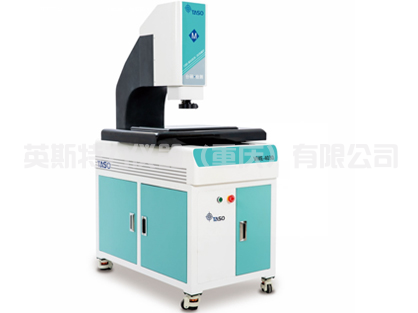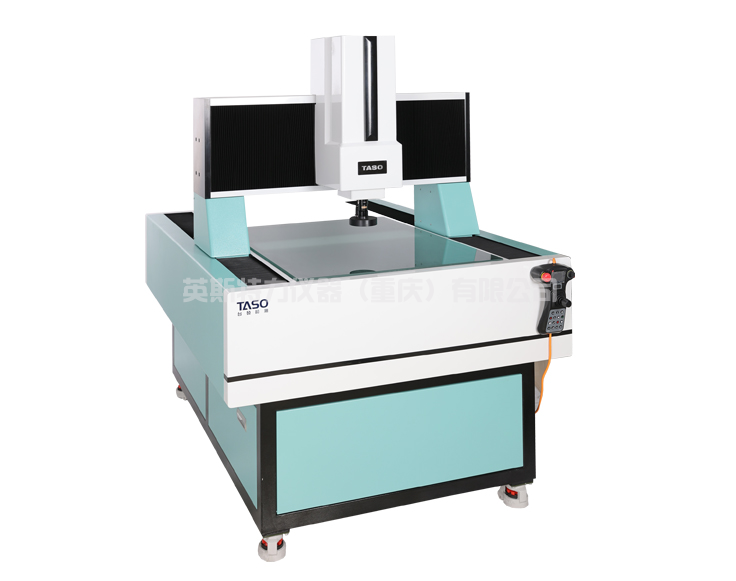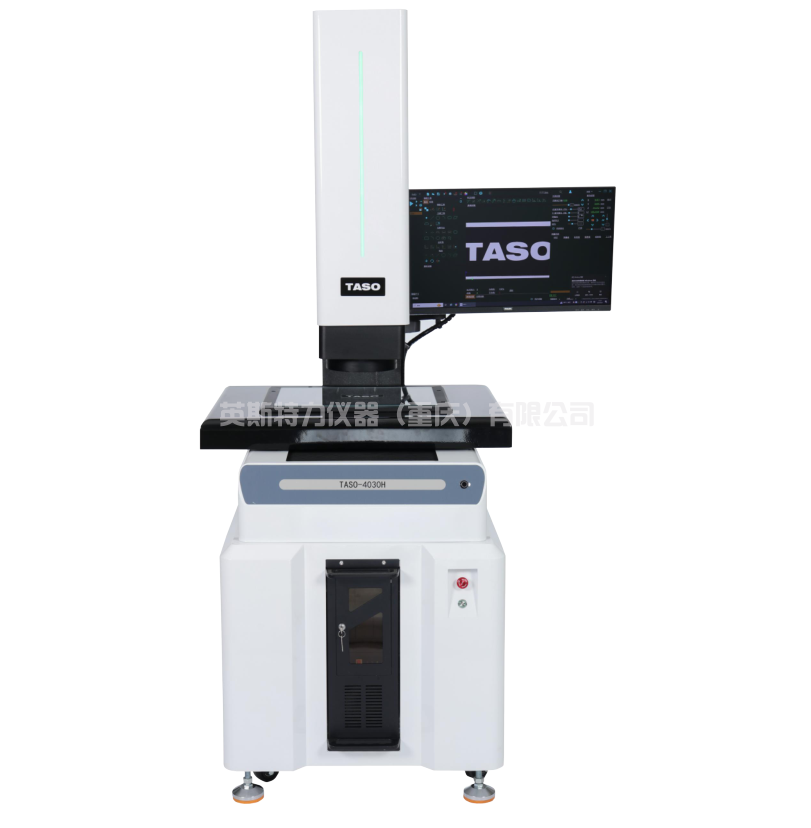目前,牵引电机主要通过牵引电机侧的主动齿轮与齿轮箱侧的从动齿轮啮合来传递扭矩。 牵引电机轴多为外锥结构,齿轮为内锥结构。 形成过盈配合。
运转中,转轴与齿轮之间存在微振动、扭力、挤压等作用,易形成应力集中。 因此,在高级维修时,采用磁粉探伤重点检查转轴,尤其是转轴锥面和齿轮的根部。 检测。 检查时发现,上述部位多次出现磁痕。
结合转轴运行环境对显示磁痕进行分析,并判定其性质,即是非相关显示、伪显示还是相关显示(疲劳裂纹),以为转轴是否继续使用及牵引电机在线运行评估提供重要支撑。
1、显示磁痕
在机车牵引电机先进维修过程中,采用便携式磁粉探伤仪和80-250目混合黑色磁粉对转子轴进行磁粉干检测,在圆周方向发现磁痕 轴锥面和齿轮的根部。
有两种类型的磁迹线,其特点是:
①第一类磁迹:以磁迹中间的一点为起点向两侧发展的小曲线,中间粗,两端尖,对称延伸,磁迹密集, 清除;
②第二类磁迹:磁迹松散,分布较宽,在特定位置,沿圆周方向断续。 磁迹很长(甚至长达一整圈),但不是很清晰。
2 磁痕分析、验证与判定
在长期使用过程中,牵引电机轴反复承受交变应力。 根据应力分析可知,与齿轮结合的轴锥面根部圆周方向是应力集中最大的部位。
如果这部分原有的小缺陷、表面划痕、缺口和内部气孔结构可能形成疲劳源,交变应力的反复作用就会产生疲劳裂纹。
与磁迹对应的疲劳裂纹的特点是:发生在应力集中部位,从磁迹中间的某一点向两侧发展。 可以看出,第一类磁迹符合疲劳裂纹的特征。
根据此类磁迹的特点,可以初步判断为疲劳裂纹。 此类磁标记的识别可采用以下三种方法:
(1)根据磁迹特征直接判断为疲劳裂纹。
(2)由于转轴表面交变应力最大,疲劳裂纹从表面开始出现,故可采用着色探伤的方法进行复检。 如果在着色探伤过程中仍出现磁痕,则判断为疲劳裂纹。
(3)由于转轴疲劳裂纹尺寸较小,使用便携式磁粉探伤仪和320-400目磁悬浮进行磁粉湿法复检(湿法灵敏度 磁粉法的灵敏度高于干磁粉法)。 如下图所示,磁性标记是可见的。 仍表现出疲劳裂纹的特征,判定为疲劳裂纹。
在使用中,牵引电机轴锥面根部与齿轮结合的圆周方向反复受到交变扭矩、弯曲、振动、挤压、轧制等作用。 这部分容易发生局部硬化,使磁导率发生变化,产生漏磁场。 ,从而在轧制和开卷的界面上形成磁痕。 滚动作用线往往沿轴向有较小的位移,因此磁痕多圈平行地显示在转子的滚动部分上。
局部硬化造成的磁迹的特点是:磁迹松散,分布较宽,位置特异,沿圆周方向呈断续的磁迹。 磁迹很长(甚至长达一整圈),但不是很清晰。 可以看出,第二种磁标记符合局部硬化磁压痕的特点。
根据这种磁痕的特点,可以初步判断为局部硬化引起的无关显示,不属于缺陷的范畴,不会对转轴造成伤害。 此类磁标记的识别方法如下:
(1)根据磁迹的特点或用放大镜观察转轴表面有无挤压、滚压等痕迹,可直接判断为局部硬化引起的无关显示。
(2)局部硬化造成的不相关显示磁痕是由磁导率差异引起的漏磁场形成的,因此可以采用色透检测的方法进行复检。 如下图所示,经检查无缺陷显示。 显示不相关,确定为局部硬化所致。
(3) 旋转轴退火后再次进行磁粉检查。 如果磁迹消失,则确定为局部硬化引起的无关显示。
综上所述
(1)确定转轴磁粉探伤所显示的磁痕,可采用多种检测方法进行识别和复检。
(2)疲劳裂纹对转轴的危害很大。 必须准确判断识别,提前排除损坏,确保牵引电机安全运行。
(3) 局部硬化引起的不相关迹象不是裂纹缺陷,不会对轴造成危害。
英斯特力仪器是一家集研发、生产及销售于一体的 影像测量仪,拉力试验机, 硬度计 ,探伤仪, 粗糙度仪, 测厚仪, 金相设备厂家, 致力于为客户提供更好的检测仪器。
At present, the traction motor transmits torque mainly by meshing the driving gear on the side of the traction motor with the driven gear on the side of the gearbox. Traction motor shaft for the outer cone structure, gear for the inner cone structure. An interference fit is formed.
During operation, there are micro-vibration, torsion, extrusion and other effects between the rotating shaft and the gear, which are easy to form stress concentration. Therefore, in advanced maintenance, magnetic particle inspection is used to focus on checking the rotating shaft, especially the cone surface of the rotating shaft and the root of the gear. Detection. Examination found that the above parts of the magnetic mark many times.
Combined with the operating environment of the rotating shaft, the display magnetic trace is analyzed, and its properties are determined, namely, non-correlated display, pseudo display or correlated display (fatigue crack), which provides important support for whether the rotating shaft continues to be used and the online operation evaluation of the traction motor.
1, display magnetic trace
In the advanced maintenance process of locomotive traction motor, the portable magnetic particle flaw detector and 80-250 mesh mixed black magnetic powder were used to detect the magnetic particle dry of the rotor shaft, and the conical surface of the magnetic trace shaft and the root of the gear were found in the circumferential direction.
There are two types of magnetic track, characterized by:
(1) The first type of track: a small curve developed from a point in the middle of the track to both sides, thick in the middle, sharp at both ends, symmetrical extension, dense magnetic track, clear;
(2) The second type of magnetic track: loose magnetic track, wide distribution, in a specific position, discontinuous along the circumferential direction. The track is long (even a full circle), but not very clear.
Magnetic trace analysis, verification and determination
In the process of long-term use, the traction motor shaft is repeatedly subjected to alternating stress. According to the stress analysis, the circumferential direction of the shaft cone root combined with the gear is the part where the stress concentration is the largest.
If this part of the original small defects, surface scratches, notches and internal pore structure may form a fatigue source, the repeated action of alternating stress will produce fatigue cracks.
The fatigue crack corresponding to the track is characterized by that it occurs at the stress concentration and develops from a certain point in the middle of the track to both sides. It can be seen that the first kind of magnetic trace conforms to the characteristics of fatigue cracks.
According to the characteristics of this kind of magnetic trace, it can be preliminarily judged as fatigue crack. The following three methods can be used to identify such magnetic markers:
(1) Fatigue cracks can be directly judged according to the magnetic track characteristics.
(2) Due to the maximum alternating stress on the surface of the rotating shaft, fatigue cracks begin to appear from the surface, so the method of color inspection can be used for reinspection. If the magnetic marks still appear in the process of color inspection, it is judged as fatigue crack.
(3) Because the fatigue crack size of the rotating shaft is small, portable magnetic particle flaw detector and 320-400 mesh magnetic suspension are used for wet magnetic particle reinspection (the sensitivity of wet magnetic particle method is higher than that of dry magnetic particle method). As shown below, the magnetic marker is visible. It still shows the characteristics of fatigue crack and is judged as fatigue crack.
In use, the circular direction of the cone root of the traction motor shaft and the gear is repeatedly subjected to alternating torque, bending, vibration, extrusion, rolling and other effects. This part is prone to local hardening, so that the permeability changes, resulting in magnetic leakage. , thus forming magnetic marks on the interface between rolling and uncoiling. The rolling action line often has a small displacement along the axial direction, so the magnetic trace is displayed in parallel on the rolling part of the rotor.
The magnetic trace caused by local hardening is characterized by loose magnetic trace, wide distribution, specific position, and discontinuous magnetic trace along the circumference. The track is long (even a full circle), but not very clear. It can be seen that the second magnetic marker conforms to the characteristics of locally hardened magnetic indentation.
According to the characteristics of this magnetic trace, it can be preliminarily judged as irrelevant display caused by local hardening, which does not belong to the category of defect and will not cause damage to the rotating shaft. The identification method of such magnetic markers is as follows:
(1) According to the characteristics of magnetic track or using a magnifying glass to observe whether there is extrusion, rolling and other traces on the surface of the rotating shaft, it can be directly judged as the irrelevant display caused by local hardening.
(2) The unrelated display magnetic marks caused by local hardening are formed by the leakage magnetic field caused by the permeability difference, so the color penetration detection method can be used for reinspection. As shown in the picture below, no defect is shown after inspection. Showed no correlation, determined to be due to local hardening.
(3) Magnetic particle inspection shall be carried out again after annealing of the rotating axis. If the trace disappears, it is determined to be an irrelevant display caused by local hardening.
From what has been discussed above
(1) To determine the magnetic trace shown by magnetic particle inspection of the rotating shaft, a variety of detection methods can be used for identification and reinspection.
(2) Fatigue cracks do great harm to the rotating shaft. It is necessary to accurately identify and eliminate damage in advance to ensure the safe operation of traction motor.
(3) Unrelated signs caused by local hardening are not crack defects and will not cause harm to the shaft.







 客服1
客服1 